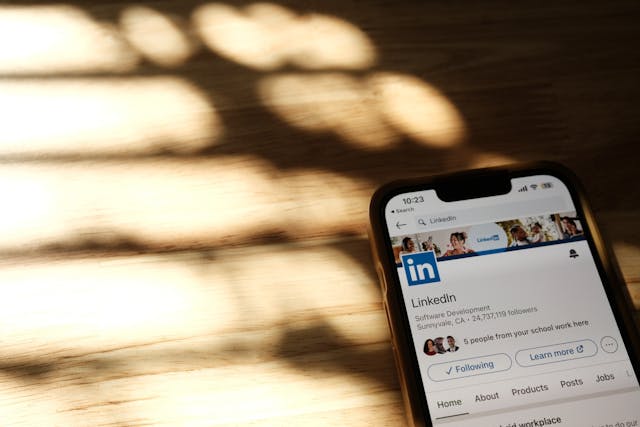The promised land of direct-to-consumer commerce has become a graveyard of ambitious startups. The statistics are sobering: according to recent data from Deloitte, nearly 90% of D2C ventures fail within their first four years. Behind each shuttered virtual storefront lies a similar pattern of missteps that separates the doomed majority from the triumphant few.
What’s particularly fascinating is that most of these failures aren’t due to poor products or lack of market demand. Rather, they stem from fundamental misconceptions about what drives sustainable D2C growth in today’s increasingly crowded digital landscape.
Let’s pull back the curtain on why so many D2C brands collapse—and extract the actionable blueprint that the successful 10% follow to achieve escape velocity.
The Deadly CAC Trap: When Acquisition Becomes a Quicksand
The single most common killer of promising D2C brands is the relentless rise in customer acquisition costs (CAC). According to 2024 data from Common Thread Collective, average CAC across digital channels has increased by 222% since 2019, while conversion rates have simultaneously declined by 30%.
This creates a lethal equation: spending more to acquire customers who are worth less.
The failed majority responds by frantically chasing cheaper acquisition channels, slashing prices to improve conversion rates, or raising more capital to fuel their broken model. These are all variations of the same fundamental error—treating symptoms rather than addressing the disease.
Meanwhile, the successful minority takes a radically different approach. Brands like Lovevery (the subscription toy company now valued at over $800M) have built their entire model around extending customer lifetime value rather than minimizing acquisition costs.
Their secret? According to their Chief Growth Officer, “We don’t view CAC as a cost to be minimized, but as an investment to be optimized.” This philosophy manifests in several counter-intuitive strategies:
- They spend more upfront on customers with high predicted LTV. While failed brands chase the cheapest possible acquisitions, successful ones use sophisticated predictive models to identify prospects with the highest potential value, then invest disproportionately in acquiring them.
- They view first purchases as the beginning of the relationship, not the end goal. Lovevery’s onboarding sequence focuses on product education and usage, not immediate upsells—increasing 60-day retention by 78% compared to industry averages.
- They measure marketing efficiency ratio (MER) rather than ROAS. While failed brands celebrate immediate return on ad spend, successful ones optimize for total revenue generated per marketing dollar over 180-day windows.
Implementation tip: Calculate your allowable CAC based on 180-day customer value, not first purchase profit. Then build acquisition models that prioritize customer quality over quantity.
The Differentiation Delusion: Why “Better” Isn’t Better Enough
Walk through the digital graveyard of failed D2C brands and you’ll hear the same refrain echoing from their founders: “We had a better product.”
The painful truth is that “better” rarely matters in crowded categories. According to research from the Marketing Science Institute, 88% of consumers cannot distinguish between the actual performance of competing products in mature categories, regardless of quality differences.
Failed brands pour resources into incremental product improvements that customers neither notice nor value. They mistakenly believe that optimization will save them, when what they really need is differentiation.
The successful 10% take a fundamentally different approach. Rather than making slight improvements to existing category conventions, they deliberately break them.
Footwear brand Atoms didn’t just make a marginally better sneaker—they reimagined the entire category convention by offering quarter sizes and different sizes for left and right feet. This singular focus on solving the “perfect fit” problem created a distinctive market position that larger competitors couldn’t easily replicate.
The result? While dozens of sneaker startups have failed, Atoms has built a loyal community of customers who pay premium prices for a uniquely differentiated experience.
Implementation tip: Identify the category conventions your competitors universally follow, then deliberately break one that solves a meaningful customer problem. Measure success not by comparison metrics, but by whether customers can describe why your brand is different in a single sentence.
The Channel Dependency Disease: When Growth Becomes Hostage
Perhaps the most insidious killer of D2C brands is overreliance on a single acquisition channel. Data from CB Insights shows that 29% of failed D2C startups attributed their demise to changes in platform algorithms or economics.
The pattern is painfully predictable: Brand discovers underpriced customer acquisition channel. Brand scales rapidly. Channel becomes saturated. Acquisition costs skyrocket. Brand collapses.
This cycle has played out countless times across Facebook, Instagram, TikTok, and Google—leaving behind the wreckage of once-promising brands that became hostages to platforms they didn’t control.
The successful minority have built what growth expert Brian Balfour calls “channel-redundant” acquisition models. They systematically diversify their customer acquisition across multiple channels, ensuring no single platform accounts for more than 30% of new customers.
Skincare brand Youth To The People exemplifies this approach. Before their $355M acquisition by L’Oréal, they had built a acquisition model spanning paid social, organic content, retail partnerships, micro-influencers, and events—with no single channel contributing more than 25% of new customers.
According to their former CMO, “We never wanted to be hostage to any platform’s algorithm. That meant accepting higher blended CAC, but it gave us stability that single-channel brands didn’t have.”
Implementation tip: Map your current acquisition channels and calculate your “channel concentration risk” (percentage of new customers from your top channel). Then develop a deliberate diversification strategy, accepting that new channels will initially deliver higher CAC while reducing systemic risk.
The Capital Misallocation Syndrome: Funding the Wrong Growth Levers
The venture capital flowing into D2C has created a dangerous illusion: that money can solve fundamentally flawed business models. Research from Pitchbook shows that 67% of failed D2C brands had raised external capital, with the median failed startup having raised $5.8M.
More tellingly, these failed brands allocated capital in strikingly similar ways: 51% to marketing, 22% to technology, 18% to inventory, and just 9% to customer experience and retention.
The successful minority inverts this allocation. According to analysis from Forerunner Ventures, the D2C brands in their portfolio that achieved $100M+ valuations allocated their capital dramatically differently: 38% to customer experience, 32% to marketing, 18% to technology, and 12% to inventory.
This reallocation reflects a fundamental truth: sustainable D2C growth comes from delighting existing customers, not just acquiring new ones.
Beauty brand Merit exemplifies this approach. While competitors poured millions into Facebook and Instagram advertising, Merit invested heavily in post-purchase experience—from packaging design to personalized regimen recommendations to a sophisticated replenishment program.
The result? Merit’s second-order purchase rate is 78% (versus a category average of 29%), creating a financial engine that generates growth without requiring constant capital infusion.
Implementation tip: Audit your current spending by category. Then reallocate at least 20% from acquisition to retention and experience enhancement, measuring the impact on repurchase rates and 180-day customer value.
The Data Blindness Epidemic: When Metrics Mislead
Perhaps the most pervasive problem among failed D2C brands is focusing on the wrong metrics. According to research from Simon-Kucher Partners, 72% of failed D2C brands prioritized growth rates over unit economics in their internal dashboards and investor updates.
This creates a dangerous self-deception where brands celebrate “success” that is actually driving them toward failure.
The successful minority has developed what Forerunner Ventures calls “economic clarity”—a ruthless focus on contribution margin per order, customer acquisition payback period, and cohorted retention rates.
Outerwear brand Aether Apparel exemplifies this approach. While competitors chased top-line growth through discounting and rapid category expansion, Aether maintained laser focus on contribution margin per order—even when it meant growing more slowly.
According to their CEO, “We were often teased for our conservative growth as competitors raised massive rounds and scaled rapidly. Five years later, we’re still here and profitable, while many of those high-flyers have disappeared.”
Implementation tip: Rebuild your primary dashboard around these four metrics: contribution margin per order, CAC payback period by cohort, 6-month retention rate, and marketing efficiency ratio. Then make all growth decisions based on their impact on these metrics rather than top-line revenue.
The Brand Superficiality Syndrome: When Identity Becomes Hollow
The final killer of promising D2C brands is treating brand as a visual identity exercise rather than a strategic platform. Failed brands invest in gorgeous aesthetics and clever copy, but neglect the deeper work of creating meaningful differentiation and emotional connection.
According to research from Diffusion, 78% of D2C brands that failed within 24 months had brand recognition scores below 8% in their target demographic, despite significant marketing spend.
The successful minority understands that brand is not what you say about yourself, but what customers say about you when you’re not in the room. They build what strategist Ana Andjelic calls “community-validated differentiation”—positioning that is actively reinforced by customer behavior and advocacy.
Outdoor brand Cotopaxi exemplifies this approach. Their colorful, one-of-a-kind Del Día bags aren’t just aesthetically distinctive—they tell a story about sustainability and ethical production that customers actively share and celebrate.
According to their founder, “We don’t spend money trying to convince people we’re purpose-driven. We spend it actually being purpose-driven in ways customers naturally want to talk about.”
The result? Cotopaxi’s customer acquisition costs are 59% lower than category averages, driven by organic social sharing and word-of-mouth that naturally extends their reach.
Implementation tip: Audit your current brand strategy by asking: “What do our customers tell others about us unprompted?” If the answer isn’t clear or compelling, reallocate resources from aesthetic refinement to creating distinctive experiences worth talking about.
The 10% Blueprint: Five Principles for Sustainable D2C Success
The D2C brands that defy the 90% failure rate share a common set of principles that can be systematically applied:
- They optimize for customer lifetime value, not minimal acquisition cost. This means investing more upfront in high-potential customers and measuring success over 180-day windows, not immediate ROAS.
- They break category conventions rather than following them. Instead of making incremental improvements to established formulas, they deliberately violate expectation in ways that solve meaningful customer problems.
- They build channel-redundant acquisition models. By diversifying customer acquisition across multiple channels, they create stability that single-channel brands lack.
- They allocate capital to experience and retention, not just acquisition. This creates a financial engine that generates organic growth without requiring constant capital infusion.
- They focus relentlessly on unit economics and contribution margin. This provides the runway to weather market changes and build sustainable advantage.
In a landscape where 90% of D2C brands are destined for failure, these principles offer a roadmap for joining the successful minority. The path isn’t easy or quick—but it leads to building brands that endure rather than flare briefly before fading away.
The question for every D2C entrepreneur isn’t whether you want to succeed, but whether you’re willing to follow the difficult path that success requires.









